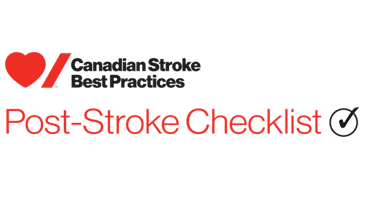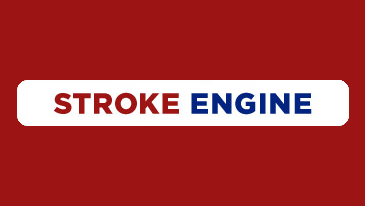- Definition and Considerations
- 1. Supporting People with Stroke, Their Families and Caregivers
- 2. Education for People with Stroke, Their Families and Caregivers
- 3. Interprofessional Care Planning and Communication
- 4. Community Participation Following Stroke
- 5. Transition to Long-Term Care Following a Stroke
- 6. Post Stroke Depression
- 7. Post-Stroke Fatigue
Recommendations
3.0 Interprofessional care planning and effective communication is essential to ensure continuity of care, safety, and to reduce risk of complications and adverse events during stroke care particularly at transition points [Evidence Level C].
3.1 Individualized Care Plan
The person with stroke, their family and caregivers should be actively engaged in development of an up-to-date care plan:
- The care plan should be person-centered; culturally appropriate; include person-centered goals;and defines ongoing individualized care needs [Evidence Level C].
- The care plan should be reviewed with the person with stroke and updated to reflect changing needs, evolving goals, progress at each transition, when changes and/or improvements in health status occur and when the person is not progressing in recovery. [Evidence Level B].
3.1 Clinical Consideration:
- The care plan should be initiated at the first point of contact with the healthcare system, such as the emergency department, and be refined and updated as the person progresses through the continuum of care.
3.2 Transition planning
Transition planning should begin as soon as possible following initiation of care at each applicable stage and setting [Evidence Level B].
- Transition planning discussions, decisions, and activities should be ongoing to reflect changing needs, evolving goals, and progress through the recovery process [Evidence Level B].
- A transition planning process should be established as a well-organized collaboration between health professionals, the person with stroke, their family, and caregivers [Evidence Level B].
- The following should be considered throughout transition planning:
- Formulation of a goal-oriented transition plan (e.g., discharge date) with the person with stroke, family, and caregivers [Evidence Level B].
- Identification of possible transition issues for the person with stroke and their family, and other needs which could potentially delay discharge. These should be addressed early in transition planning [Evidence Level B].
- Assessment of caregiver capacity, decision-making ability, and ability to meet the physical and psychosocial needs of the person with stroke [Evidence Level C]. Refer to Section 1 and Section 2 for additional information.
- Addressing transition planning needs and booking of appointments prior to leaving current setting, especially short stay settings including emergency department and acute care for those discharged directly back to the community [Evidence Level C].
- Utilization of telemedicine modalities where available to increase access to timely and appropriate stroke care follow-up [Evidence Level B]. Refer to CSBPR Telestroke Toolkit for additional information.
- Specific transition planning activities that should be completed as appropriate include:
- A home assessment to identify home modifications required for accessibility and safety [Evidence Level B].
- Caregiver skills training specific to the current and ongoing needs of the person with stroke [Evidence Level B]. Refer to Section 1 and Section 2 for additional information..
- Planned and goal-oriented day, weekend and or overnight visits to the identified discharge location [Evidence Level B], in order to:
- help identify potential barriers,
- assess readiness for discharge,
- and to inform therapy and discharge planning activities.
- Written discharge instructions as a component of an individualized care plan that addresses the following issues as appropriate: functional ability at the time of discharge, risks and safety considerations, action plans for recovery, medications at discharge and instructions for adjustment, follow-up care, follow-up care provider contact information and information for one point of contact post-discharge [Evidence Level B].
- All communications should be available in aphasia-friendly formats as required and appropriate to the health literacy of people with stroke, their families and caregivers [ Evidence-Level B].
- A post-discharge follow-up plan, initiated by a designated team member, such as a case manager or stroke navigator, to ensure continuity of care [Evidence Level B].
3.3 Health Professional Communication
Health Professional Communication: Processes should be in place to ensure timely and effective transfer of relevant information at all points of access and transition in the healthcare system, to ensure seamless transitions and continuity of care [Evidence Level B].
- All members of the interdisciplinary stroke team should share timely and up-to-date information with healthcare providers at the next stage of care [Evidence Level B].
- The transfer of information should be:
- Comprehensive with all relevant information on the person with stroke including medications, and progress to date, planned appointments, ongoing recovery needs and goals [Evidence Level B].
- Provided to the primary care physician in a formal, typed, detailed, discharge summary (from the most responsible physician) [Evidence Level B]. Note, not all patients may have a primary care provider, and if not, this should also be addressed. Refer to Box 3 for core content to be considered for inclusion in discharge summaries.
- Timely and occur prior to the time of transition to next care setting [Evidence Level C].
- When possible, accessible through electronic health records [Evidence Level C].
- Include the use of telemedicine technology when appropriate [Evidence Level C]. Refer to CSBPR Telestroke Toolkit for additional information.
- A designated member of the team should facilitate the transfer of information and referrals to appropriate follow-up services for the person with stroke [Evidence Level B].
Transition Summary to next care setting and primary care provider should include:
- Stroke diagnosis, etiology and date of stroke
- Stroke risk factors
- Secondary prevention strategies
- Past medical history
- Social and family history
- Medications on discharge
- Summary of hospital course including secondary complications, co-morbid illnesses, relevant investigations (e.g., labs and diagnostic imaging) and any follow-up required
- Identification of urgent care needs and priority issues
- Advanced care plan status
- Summary of stroke impairments and treatments/therapies received
- Level of function on transition for ADLs, functional mobility, and iADLs including any supervision or assistance required
- Community Home care services arranged and any crisis placement recommendations
- Equipment and resources prescribed, including what has been provided, and what is pending
- Recommended future management plan, including therapies, home program, community activities and outstanding medical consultations
- Return to driving recommendations/plan if applicable
- Return to work recommendations/plan if applicable
- Ongoing and long-term goals
- Follow up appointments planned/pending
- Specific identification of primary care provider follow-up responsibilities
- Direct communication between most responsible physician and the primary care provider when needed
Stroke care can be complex and requires ongoing monitoring and management. Clear communication in a timely manner is essential to ensure continuity of care, safety, and to reduce risk of complications and adverse events resulting from the confusion and ambiguity that can arise during transition points.
People with a lived experience of stroke have reported that the healthcare system can seem siloed between different specialties or systems of care, with limited integration and interaction between healthcare settings or practitioners. These experiences cause frustration, feelings of being overwhelmed and add burden to families as they transition away from acute inpatient or inpatient rehabilitation settings into the community. These concerns emphasize the importance of communication between healthcare team members and settings throughout the transitions of care.
Effective discharge planning is essential for smooth transitions through the continuum of stroke care. Delayed or incomplete planning leads to prolonged hospital stays and an increased risk of adverse events following discharge. People with stroke, family members and healthcare providers involved in each phase of care should all be involved in discharge planning to ensure effective and safe transitions.
Using feedback provided by people with a lived experience of stroke, the importance of the timing of discharge planning was emphasized. Ensuring that the discharge planning occurs throughout the stages of care, rather than directly prior to discharge, can improve the experience of the person with stroke, their family and caregivers. Furthermore, this helps to make sure that all services and resources are established ahead of time. People with a lived experience of stroke report difficulties accessing resources post discharge relating to denial of services, for example, being unable to use a service due to an age restriction; accessing accessible transportation, and financial support. These challenges were further complicated when the person did not have a family physician, which should be addressed and taken into consideration during the discharge planning process.
Transitions of care support and actions are applicable across the continuum of stroke care, including in primary care, the emergency department, acute care, rehabilitation settings, complex care/transitional bed settings, long-term care and community settings. Processes and mechanisms should be in place in all these settings to address efficient communication between settings and healthcare providers, including:
- Strong relationships and formal agreements among healthcare providers within and across regions to increase the efficient and timely transition.
- Development of processes across healthcare institutions and settings for the coordination of discharge planning and ongoing medical management through to primary care, community services, follow-up, and access to required healthcare services (e.g., ongoing rehabilitation or acute care).
- Processes, protocols, and resources for conducting home assessments by interprofessional team members prior to discharge.
- Access to self-management and caregiver training and support services as required ensuring a smooth transition.
- Resource capacity to enable appropriate and timely access to services at the next stage of care with the required specialties, intensity, and frequency.
- Strong relationships and formal agreements among healthcare providers within regions to increase the efficient and timely transition of persons with stroke.
- Implementation of standards, processes, and tools to ensure timely discharge summaries sent to primary care and other relevant healthcare professionals and/or agencies to facilitate continuity of care at transition points.
- Adequately resourced community health and support services for persons with stroke.
- Providing the right care and services in the right settings at the right times following stroke.
- Capacity for social workers and other case management or healthcare personnel with dedicated responsibilities for discharge planning.
- Staff who are aware of person’s right to privacy and who comply with privacy legislation and preferences when releasing a person with stroke’s information.
- The development and implementation of an equitable and universal pharmacare program, implemented in partnership with the provinces, designed to improve access to cost-effective medicines for all people in Canada regardless of geography, age, or ability to pay. This program should include a robust common formulary for which the public payer is the first payer.
Clinical and Health System Performance Measures:
Transition Planning
- Proportion of acute stroke patients who have at least one alternate level of care day during their index acute care admission for stroke.
- Average number of alternate level of care days per in acute care settings.
- Median length of stay of people with stroke in acute inpatient care (core).
- Readmission rate for persons with stroke discharged from hospital for all reasons, within 90 days, 6 months and one year.
- Admission to longterm care within one year of being discharged back to the community following a stroke event.
Interprofessional Communication
- Percentage of persons with stroke who are given a copy of their completed care plan and discharge summary at the time of discharge from acute inpatient care or inpatient rehabilitation.
- Percentage of persons with stroke for whom a discharge summary is completed prior to or within 48 hours of discharge from one care setting to the next and received by the care provider at the next stage of care.
Person-Oriented Measures (PREMS, PROMS)
- Percentage of persons with stroke who are given a copy of their completed discharge plan at the time of discharge from acute inpatient care or inpatient rehabilitation.
- Proportion of persons with stroke who return to the hospital post-discharge for non-medical reasons (i.e., failure to cope).
- Quality of life of people after discharge for an acute stroke event, measured at transition points and routinely throughout recovery (for example, at 60, 90, 180 days and 1 year following discharge)
Health Care Provider Information
- CSBPR Virtual Healthcare Toolkit
- Taking Action for Optimal Community and Long-Term Stroke Care: A resource for healthcare providers
- Registered Nurses’ Association of Ontario Developing and Sustaining Interprofessional Health Care: Optimizing patients/clients, organizational, and system outcomes
- Health Quality Ontario – Transitioning From Hospital to Home
- Discharge Summary Outline
- Centre for Interprofessional Education (University of Toronto)
- Canadian Interprofessional Health Collaborative
- Centre for Advancement of Interprofessional Education
- Re-Engineered Discharge (RED) Toolkit
- GTA Rehab Network Inter-Organizational Transfer of Accountability Guidelines
- Transitions between hospital and home (Quality Standards from Health Quality Ontario)
Resources for People with Stroke, Families and Caregivers
- Taking charge of your stroke recovery: Rehabilitation and recovery infographic
- Taking charge of your stroke recovery: Transitions and community participation infographic
- Heart & Stroke Services and Resources Directory Your Stroke Journey: A guide for people living with stroke
- Post-Stroke Checklist
- A Family Guide to Pediatric Stroke
- Heart & Stroke Recovery and Support Health Information
- Stroke in Young Adults
- Talking Care of Myself: A Guide for When I Leave the Hospital
- Stroke Engine
- Canadian Partnership for Stroke Recovery Patient Resources
- Transitions between hospital and home (Patient Guide from Health Quality Ontario)
Evidence Table and Reference List
Discharge Planning
Discharge planning should begin as soon as possible during each phase of care and should involve the patient, family/caregivers, and all members of the interprofessional team. The goal of discharge planning is to ensure a safe and efficient transition between care settings while maintaining a continuity of care and coordination of services that optimize recovery and secondary prevention, as appropriate. Discharge planning activities should include a pre-discharge needs assessment, home visits, meetings between the care team, patient, and family/caregivers, a post-discharge follow-up plan, and communication with team members at the next phase of care. In a recent Cochrane review Gonçalves-Bradley et al. (2016) identified 30 RCTs including patients admitted to any type of hospital (acute, rehabilitation or community) with any medical or surgical condition (one trial [Sulch et al. 2010]) included patients with a diagnosis of stroke). Trials evaluated discharge plans from hospital that included assessment, planning, implementation and monitoring components, initiated at some point prior to discharge. Hospital length of stay (MD -0.73, 95% CI -1.33 to -0.12) and unscheduled three-month readmission rates (RR=0.87, 95% CI 0.79 to 0.97) were both found to be significantly reduced for elderly patients with a medical condition who received discharge planning, compared to care as usual. No significant between group differences were reported in terms of discharge destination or mortality. In the only RCT identified in the Cochrane review, Sulch et al. (2000) randomized 152 patients within two-weeks of stroke onset to receive discharge planning according to an integrated care pathway or care as usual. No significant between group differences were reported with respect to six-month mortality (13% vs. 8%), institutionalization (13% vs. 21%), or length of stay (50±19 vs. 45±23). However, those randomized to receive conventional care experienced significantly greater change on the Barthel Index from 4 to 12 weeks (median change = 6 vs. 2, p<0.01) and reported significantly greater scores on the EuroQol at six-months (72 vs. 63, p<0.01).
Stroke Navigators
Navigating through the post-stroke continuum has been highlighted as a frequent source of dissatisfaction, for patients and informal caregivers, particularly during the transition from hospital to community. Several studies have been conducted to evaluate the benefit of individuals who coordinate access to appropriate services for patients recovering from stroke, who go by many names including stroke navigator, case manager, care coordinator, or system navigator). Manderson et al. (2011) conducted a systematic review including 15 publications, representing 9 RCTs examining system navigation models for older adults living with multiple chronic diseases making transitions across healthcare settings. The services provided included care planning, coordination of care, phone support, home visits, liaison with medical and community services, and patient and caregiver education. In most of the studies, economic, psychosocial and functional benefits were associated with system navigation. While the services of a registered occupational therapist, who functioned as a community stroke navigator, resulted in significant improvements in the mean daily functioning subscale of the Reintegration to Normal Living Index RNLI among 51 patients at the end of four months, (54.1 to 59.3, p=0.02), there were no significant improvements in other outcomes (2-minute walk test, depression outcomes), or any caregiver outcomes (Egan et al. 2010).
Interprofessional Communication
Transitions between and within health care settings pose a safety and quality of care concern for patients recovering from stroke. A consensus policy statement by the American College of Physicians in 2009 highlighted concerns of patient safety at transition points, particularly between inpatient and outpatient care (Snow et al. 2009). Following stroke, a person is vulnerable to many of these transition points as they progress through the acute, sub-acute and chronic stages of recovery, interacting with a range of physicians in several different health-care settings. Communication between these physicians and care settings is critical for ensuring patient safety and quality of care. In a systematic review (Kattel et al 2018), included 19 studies which described hospital discharge communication between hospital-based providers and primary care physicians (PCPs). While a median of 55.1% of hospital discharge communications were transferred to the PCP within 48 hours, 8.5% of discharge summaries never reached the PCP. Information that was absent from discharge summaries included diagnostic test results (61%), pending tests at discharge (25%), and follow-up plans (41%). PCP received notification of discharge in only 23% of cases. In a controlled study of 3,248 hospitals, Mitchell (2015) explored the association between physician/nurse communication with the patient regarding discharge instructions and readmission. An average of 84% of patients reported receiving discharge instructions. Hospitals that had smaller bed numbers, were non-profit and located in non-urban areas were more likely to provide discharge instructions. Patients reported that, on average, nurses and doctors communicated well with them 78% and 82% of the time. Controlling for other factors, increasing frequency of communication surrounding discharge instructions was associated with significantly lower number of 30-day hospital re-admissions.
Areas of communication deficits were reported in a systematic review by Kripalani et al. (2007), which included the results of 73 studies examining communication deficits between hospitals and primary care providers, and interventions to improve communication during this transition. While a median of 53% of discharge letters had arrived at the physician’s office within one week of discharge, only 14.5% of discharge summaries were received the same timeframe. However, 11% of discharge letters and 25% of discharge summaries never reached the primary care physician. Discharge letters were missing a main diagnosis in 7%-48% of cases, hospital treatment details in 22%-45% of cases, medications at discharge for 7%-48% of cases, plans for follow-up in 23%-48% of cases, and notes on patient or family counselling in 92%-97% of cases. In terms of effectiveness of interventions, a significantly higher percentage of discharge summaries that were hand delivered (compared with mailing) were received by week 4 following discharge (80% vs. 57%, p<0.001). The overall quality of the summaries was perceived to be higher and the summaries were longer when computer generated, using a standard template, and were received by the primary care physician sooner.
Halasyamani et al. (2006) described the development of a discharge checklist, based on a literature review, expert committee and peer review, designed to identify the critical components in the process when discharging elderly patients from hospital. The final checklist includes 3 types of discharge documents: the discharge summary, patient instruction and communication on the day of discharge to the receiving care provider. Data elements included on the final checklist were: problem that precipitated hospitalization, key findings and test results, final primary and secondary diagnoses, condition at discharge (functional and cognitive), discharge destination, discharge medications, follow-up appointments, list of pending lab results and person to whom results will be sent, recommendations of sub-specialty consultants, documentation of patient education and understanding, identification of atypical problems and suggested interventions, 24/7 call-back number, identification of referring and receiving providers, resuscitation status.





